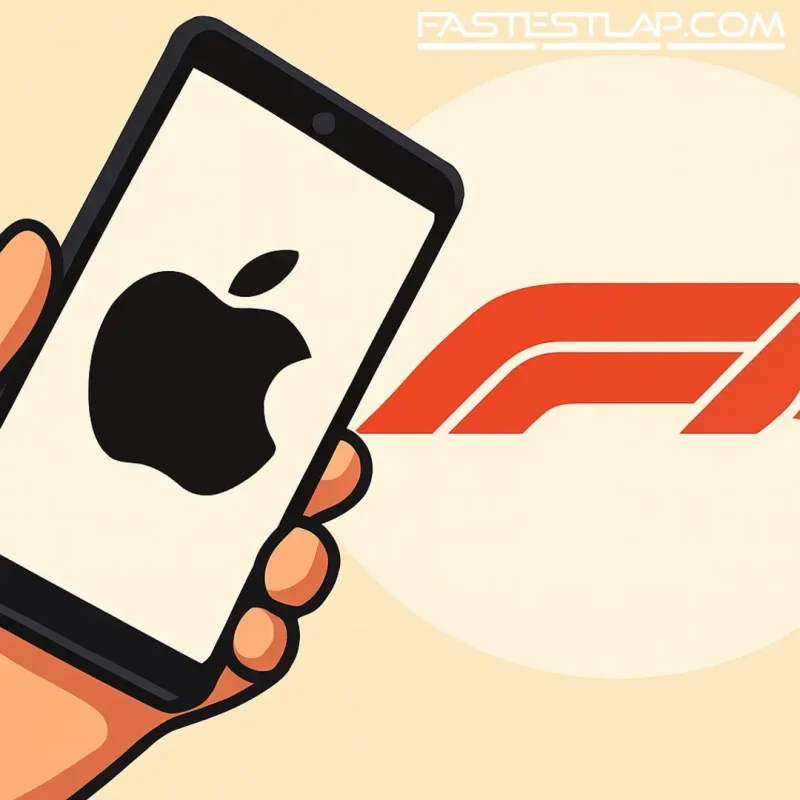Apple to take over U.S. F1 rights from 2026 in five-year deal, ending ESPN era
Formula 1 is heading to Apple from 2026 in the United States, with the tech giant striking a five-year broadcast agreement that will replace ESPN’s coverage and mark a sharp step up in rights value.
Industry figures peg the deal at more than a 50% increase on current fees, reportedly around $140 million per year. It’s a big swing in a market F1 has courted aggressively—and the clearest sign yet that the sport’s U.S. growth spurt is being met with equal ambition on the media side.
“This is an incredibly exciting partnership for both Formula 1 and Apple that will ensure we can continue to maximise our growth potential in the U.S. with the right content and innovative distribution channels,” said F1 CEO Stefano Domenicali. “We are no strangers to each other, having spent the past three years working together to create F1 The Movie, which has already proven to be a huge hit around the world. We have a shared vision to bring this amazing sport to our fans in the U.S. and entice new fans through live broadcasts, engaging content, and a year-round approach to keep them hooked.”
From 2026, Apple TV will carry every session—practice, qualifying, sprints, and Grands Prix—with a selection of races and sessions available free via the Apple TV app. F1 TV Premium will remain available in the U.S., but only through an Apple TV subscription, and will be free for those subscribers. Beyond the live product, F1 content will be “amplified” across Apple News, Maps, Music, Sports, and Fitness+, pointing to an always-on, integrated approach that few broadcasters can match.
The move ends ESPN’s modern run with F1 that began in 2018, alongside its storied role in the 1980s and 1990s. ESPN helped reintroduce the championship to a wider American audience, riding the wave of new venues, bigger showpieces, and a streaming-savvy fanbase. But Liberty Media’s growth equation is changing again, and Apple arrives with a different toolkit—and, crucially, a different platform.
That shift lines up with who’s watching. A 2025 fan survey cited by F1 points to a marked demographic turn: among U.S. fans who’ve picked up the sport in the last five years, almost half are aged 18–24, and more than half are female. If you’re trying to lock in a new generation, the ecosystem matters as much as the broadcast.
There are pragmatic business reasons, too. With the calendar already bursting at the seams, there’s limited room to squeeze more revenue out of promoters or hospitality. Broadcast deals are one of FOM’s biggest levers, and the sport’s popularity—especially in the U.S.—has given it the leverage to ask for more. Apple’s checkbook, and its ability to weave F1 through its services, makes this a logical next step.
Questions will follow. How many of those “selected” free sessions will there be? How will F1 TV Premium behave inside Apple’s walls? And what does Apple’s stamp on live motorsport look like across a full season? We’ve seen the company push hard into premium live rights elsewhere; F1 is a different animal, with a global cadence, a devoted niche inside a booming mainstream, and a fanbase that cares deeply about access and detail.
Still, this feels like a deal built for 12 months of storytelling, not just 24 Sunday afternoons. Apple’s playbook—news alerts, playlists, fitness tie-ins, real-time stats—fits a championship that never really stops. If you’re F1, you want your schedule pinging on phones and your drivers popping up in people’s feeds long after the chequered flag.
ESPN bows out having stabilized and grown F1’s Stateside presence, and did it without paywalls most weekends. Apple inherits a bigger, younger, increasingly diverse audience—and the expectation that the experience gets better, not more complicated.
For fans, the headline is simple: from 2026, your F1 Sundays move to Apple. The fine print—how many freebies, how F1 TV slots in, how the product looks—will matter. The upside, if it all clicks, is a sport that lives more naturally on the devices Americans already use all day. And for F1, it’s another lucrative stamp in a market it’s intent on making its second home.




